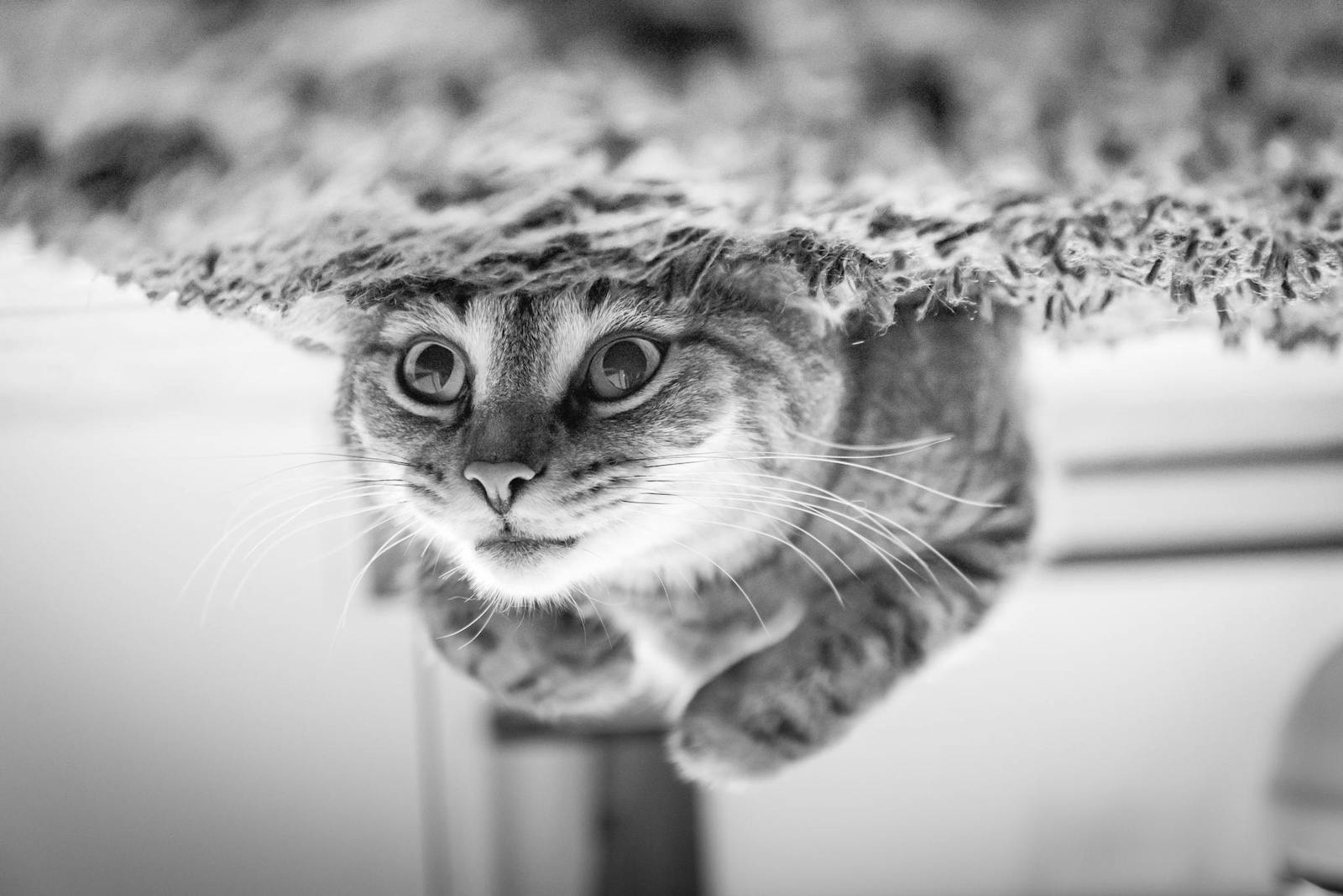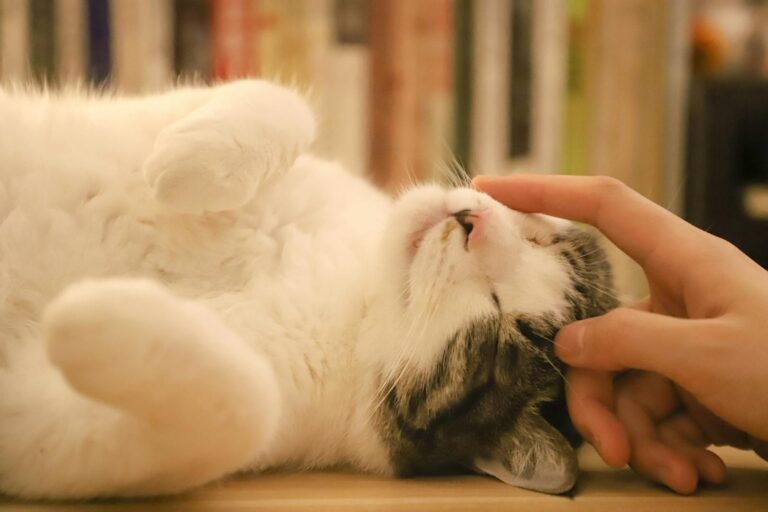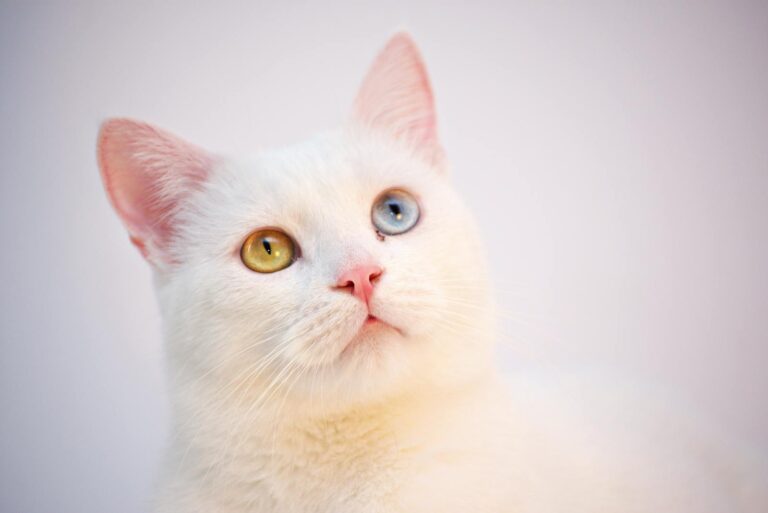How to Brush Your Cat’s Teeth Without Getting Scratched
When it comes to our furry friends, maintaining their dental hygiene is crucial for their overall health. However, many cat owners find themselves wondering how to brush their cat’s teeth without getting scratched in the process. This guide will walk you through the importance of feline dental care, understanding your cat’s behavior, preparation tips, step-by-step toothbrushing techniques, and alternative methods if brushing isn’t feasible.
Introduction: The Importance of Feline Dental Hygiene
Dental hygiene is often overlooked in cats, yet it plays a critical role in their health and well-being. Just like humans, cats can suffer from dental diseases such as gingivitis, periodontal disease, and tooth decay. These conditions not only lead to discomfort but can also result in more serious health issues, including heart, liver, and kidney diseases due to bacteria entering the bloodstream.
Understanding the significance of dental health encourages cat owners to adopt proactive measures to ensure their pets’ mouths remain healthy. Regular tooth brushing can prevent plaque build-up, reduce bad breath, and contribute to better nutrition as your kitty can chew their food more effectively when their teeth are in good condition.
The Stakes of Neglecting Dental Care
Neglecting your cat’s dental hygiene can lead to significant problems.
Health Consequences
Bacteria thrive in unhealthy gums and can enter the bloodstream, causing harm to vital organs. Conditions such as endocarditis (heart infection), chronic kidney disease, and liver dysfunction can stem from poor oral hygiene.
Behavioral Changes
Cats in pain may exhibit changes in behavior, such as aggression or hiding. This shift can make it challenging for owners to maintain regular grooming routines.
Economic Implications
Veterinary dental cleanings can be costly. Preventative care through daily brushing avoids these expensive treatments down the line.
The Benefits of Regular Tooth Brushing
Incorporating tooth brushing into your cat’s grooming routine has numerous benefits.
Improved Breath
Regular brushing helps eliminate the bacteria that cause bad breath, resulting in a fresher-smelling kitty.
Preventive Care
Establishing a dental care regimen early on prevents future dental issues and fosters a healthier lifestyle.
Strengthened Bond
The process of brushing your cat’s teeth can enhance the bond between you and your pet, as it requires trust and patience.
Understanding Cat Behavior: Why Cats Resist Toothbrushing
It’s essential to recognize that cats may resist having their teeth brushed due to instinctual behaviors and psychological factors. Understanding why your feline friend reacts negatively can help you approach the situation with empathy and patience.
Instinctual Responses to Handling
Cats are naturally predisposed to be cautious and wary of situations that make them feel vulnerable.
Predatory Nature
As solitary hunters, cats dislike being restrained or held in any manner that makes them feel trapped. They may see tooth brushing as an attack rather than a necessity.
Territoriality
Cats are territorial creatures. When you introduce foreign objects into their space, like a toothbrush, they might react defensively.
Psychological Factors at Play
Psychological aspects also contribute to your cat’s reluctance to cooperate during tooth brushing.
Lack of Familiarization
If your cat hasn’t been accustomed to having their mouth handled since kittenhood, the sudden introduction of a toothbrush can be alarming. This fear of the unknown can lead to resistance.
Stress Triggers
Certain handling techniques or even your own anxiety about the process can create tension. Cats are sensitive to human emotions, which can heighten their stress levels.
Understanding Your Cat’s Body Language
Being able to read your cat’s body language is key to successful tooth brushing.
Ears and Tail Positioning
Observe your cat’s ears and tail; if they are flat against their body or twitching, this indicates discomfort or annoyance.
Vocalizations
Growling or hissing can signal that your cat is feeling threatened. It’s important to take these warnings seriously and adjust your approach accordingly.
Preparation is Key: Gathering the Right Supplies and Creating a Calm Environment
Before attempting to brush your cat’s teeth, preparation is paramount. Having the right supplies and creating a calm environment will set the tone for a successful and less stressful experience.
Essential Supplies for Tooth Brushing
Investing in the right tools can make the process smoother and more effective.
Cat-Specific Toothbrushes
Use a toothbrush designed specifically for cats, which often features softer bristles and smaller heads for easy maneuverability within a cat’s mouth.
Specialized Toothpaste
Never use human toothpaste; instead, opt for toothpaste formulated for cats. These pastes come in flavors like chicken or fish, making the experience more appealing to your feline friend.
Treats and Chews
Keep some of your cat’s favorite treats nearby to reward them after a successful brushing session.
Setting the Stage for Success
Creating a conducive atmosphere can significantly influence how your cat reacts to tooth brushing.
Choose the Right Time
Select a time when your cat is relaxed, such as after a meal or playtime. Avoid times when they are more energetic or anxious.
Eliminate Distractions
Minimize background noise, such as television or loud appliances, and choose a quiet space where your cat feels secure.
Fostering a Positive Mindset
Your mindset is just as important as physical preparations.
Stay Calm
Your cat can sense your anxiety. By maintaining a calm demeanor, you give your cat confidence that everything is okay.
Use Gentle Touches
Gentle handling can ease your cat’s fears and help them associate the process with positive experiences.
Step-by-Step Guide: Introducing Toothbrushing Gently and Gradually
Once you’ve gathered your supplies and prepared your environment, it’s time to introduce tooth brushing to your cat in a gentle and gradual manner. This step-by-step guide will help you navigate the process smoothly.
Step 1: Introduce Mouth Handling
Before jumping straight into tooth brushing, start by acclimating your cat to having their mouth touched.
Start Slowly
For the first few days, simply stroke your cat’s face and gently rub their lips. Allow them to get used to your touch without forcing anything.
Be Diligent
Consistency is key. Do this for short sessions multiple times a day to establish familiarity.
Step 2: Let Them Taste the Toothpaste
Getting your cat acquainted with the flavor of the toothpaste can spark their interest.
Apply a Small Amount
Put a tiny dab of the cat-specific toothpaste on your finger and let your cat lick it off. This can create a positive association with the toothpaste.
Watch for Reactions
Let your cat decide how much they want to engage with the paste. Their curiosity might encourage them to look forward to the next step.
Step 3: Introduce the Toothbrush
Now that your cat is familiar with your touch and the taste of the toothpaste, you can start introducing the toothbrush itself.
Showcase the Toothbrush
Allow your cat to sniff and explore the toothbrush before using it. This serves as an invitation rather than a directive.
Gradual Transition
Begin by letting your cat lick the toothpaste off the toothbrush while it’s in your hand.
Step 4: Incorporate Brushing
With your cat comfortable around the toothbrush, it’s time to start brushing their teeth.
Gently Lift the Lips
Carefully lift your cat’s lips to expose the teeth. Use slow, deliberate movements to avoid startling them.
Brush in Circular Motions
Start brushing the outer surfaces of the teeth using gentle circular motions. Focus on areas that are prone to plaque build-up, particularly the back teeth.
Limit Session Duration
Keep initial sessions short—around 30 seconds to a minute—to avoid overwhelming your cat. Gradually increase the duration as they become more comfortable.
Techniques to Minimize Scratching: Positioning, Restraint, and Positive Reinforcement
While brushing your cat’s teeth may seem daunting, employing specific techniques can help minimize scratching and make the experience more pleasant for both of you.
Choosing the Right Positioning
How you position yourself and your cat during brushing can greatly impact the outcome.
Comfortable Placement
Have your cat sit on a flat surface, preferably in an area they feel secure. You can sit beside them or on the floor.
Supportive Grip
Gently cradle your cat’s head in one hand while keeping the other hand free to hold the toothbrush. This offers control without excessive restraint.
Effective Restraint Techniques
If your cat becomes fidgety, implement light restraint techniques to keep them still without causing distress.
Body Hug
Hold your cat close to your side, placing your arm around their body so they feel secure.
Towel Technique
Wrap your cat in a towel, leaving only their head exposed. This wraps them snugly while preventing sudden movements.
Positive Reinforcement Strategies
Rewarding your cat’s cooperation can reinforce positive behavior.
Verbal Praise
Use soothing words and praise throughout the brushing process. Your voice can calm their nerves and create a positive association.
Treat Rewards
After each successful brushing session, offer your cat a tasty treat. This can motivate them to cooperate in future sessions.
Troubleshooting and Alternatives: What to Do When Toothbrushing is Impossible
Despite best efforts, some cats may refuse to have their teeth brushed. If you find that traditional brushing methods are unfeasible, consider these troubleshooting strategies and alternatives.
Recognizing Signs of Distress
Monitoring your cat’s reactions during tooth brushing is essential.
Signs of Stress
If your cat shows repeated signs of distress, such as aggressive behavior, excessive squirming, or vocalization, it might be time to pause and reassess the approach.
Evaluate the Situation
Consider whether your cat is simply having a bad day or if they genuinely dislike the process. Sometimes, a break from brushing is necessary.
Alternative Dental Products
If tooth brushing proves too troublesome, many alternatives can help maintain your cat’s dental health.
Dental Treats
Many commercially available dental treats can assist with plaque reduction. Ensure they are vet-approved and suitable for your cat’s dietary needs.
Water Additives
Consider dental water additives that can be mixed into your cat’s drinking water to promote oral health. These products typically contain enzymes that help reduce plaque and fight bacteria.
Professional Dental Cleanings
If home care isn’t sufficient, professional veterinary cleanings may be necessary to safeguard your cat’s health.
Annual Check-ups
Regular veterinary visits allow for thorough examinations of your cat’s teeth and gums. Your veterinarian can recommend cleaning schedules based on your cat’s specific needs.
Addressing Underlying Issues
Sometimes, underlying health issues can make tooth brushing impossible. Always consult with your veterinarian to determine the best course of action for your pet.
Conclusion
Maintaining your cat’s dental hygiene is vital for their overall health, and learning how to brush your cat’s teeth without getting scratched is achievable with patience and preparation. Understanding your cat’s behavior, gathering appropriate supplies, and employing gentle techniques will help create a positive experience. Using alternatives and recognizing when to seek professional help ensures your furry friend stays happy and healthy, paving the way for a harmonious relationship between you and your beloved pet.







